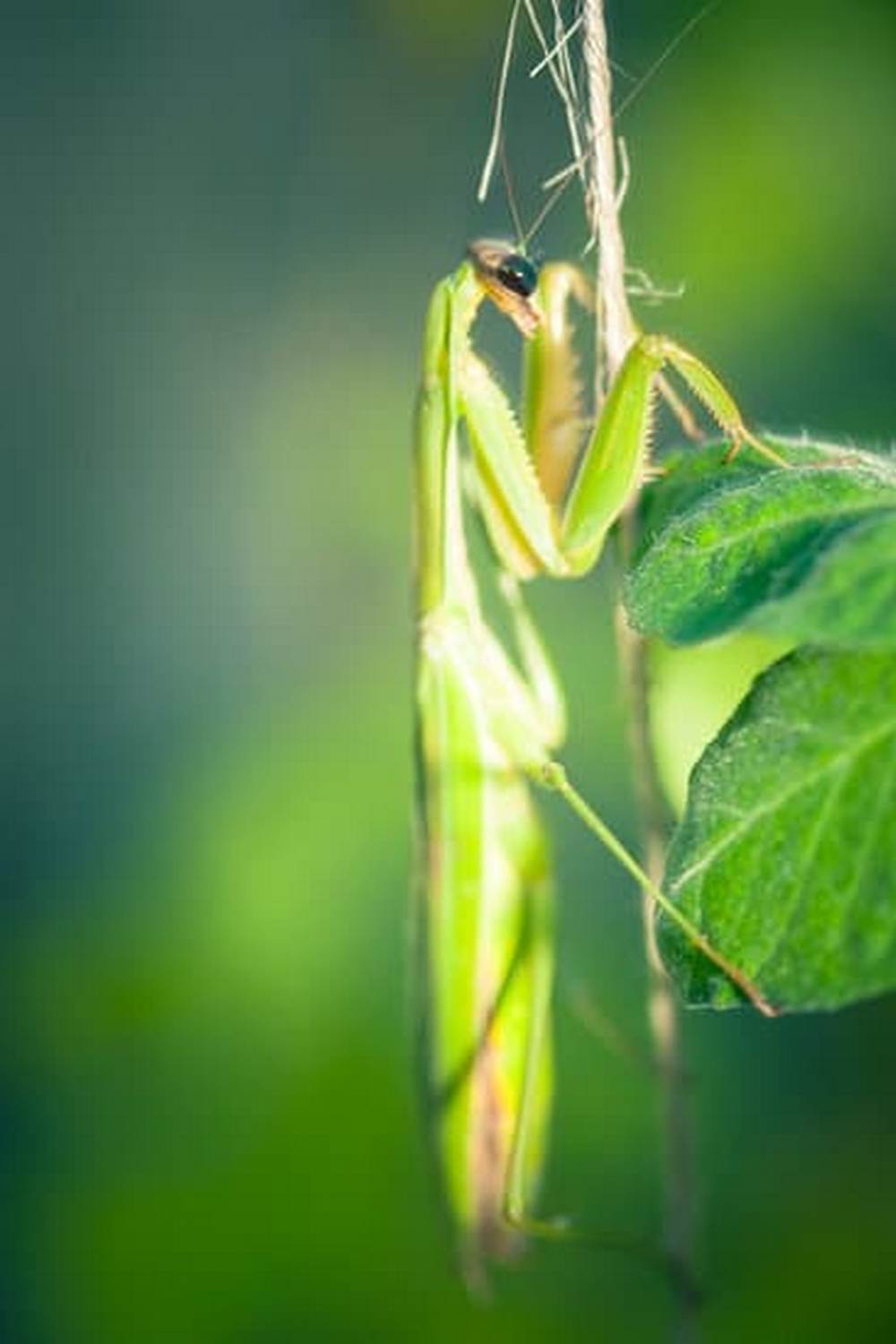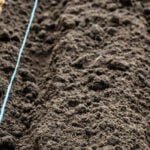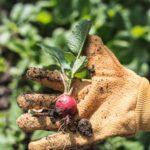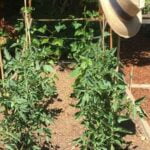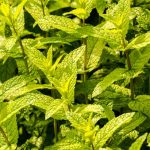Vegetable gardening in Texas heat can pose a unique set of challenges for even the most experienced gardeners. The scorching temperatures and intense sunlight in the Lone Star State can make it difficult to cultivate a successful vegetable garden. However, with the right knowledge and strategies, it is possible to beat the heat and enjoy a bountiful harvest of fresh produce.
In this article, we will delve into the specific challenges of vegetable gardening in Texas heat and provide practical tips on how to overcome them. From choosing heat-tolerant vegetables to managing pests and diseases in hot weather, we will cover everything you need to know to thrive as a vegetable gardener in Texas.
By understanding the importance of soil quality, sunlight exposure, watering techniques, and proper plant care in high temperatures, you can set yourself up for success. Whether you are a beginner or seasoned gardener, embracing the challenge of vegetable gardening in the Texas heat can be rewarding and fulfilling. Follow along as we explore the best practices for cultivating your own thriving garden oasis in the midst of summer heatwaves.
Choosing the Right Vegetables
Heat-Tolerant Vegetable Varieties
When it comes to vegetable gardening in the scorching heat of Texas, selecting the right vegetables is crucial for a successful harvest. Some vegetables thrive in high temperatures and can withstand the challenging conditions of Texas summers. Consider planting heat-tolerant varieties such as okra, sweet potatoes, black-eyed peas, jalapenos, cherry tomatoes, and Southern peas. These vegetables are known for their ability to thrive in hot weather and will give you a bountiful harvest throughout the season.
Summer Squash and Cucumbers
Summer squash and cucumbers are also excellent choices for vegetable gardening in the Texas heat. Varieties like zucchini, yellow squash, straightneck squash, and cucumber are well-suited to withstand the intense sun and heat. These vegetables require regular watering to keep them hydrated but will produce an abundance of delicious fruits for your summer meals. Be sure to provide some shade during the hottest parts of the day to protect these plants from wilting under the harsh sunlight.
Herbs for Hot Weather
In addition to vegetables, consider planting herbs that can thrive in the Texas heat. Herbs like basil, rosemary, thyme, oregano, and mint are known for their resilience to high temperatures and can add flavor to your dishes all summer long.
These herbs have deep roots that help them access water even in dry conditions, making them ideal choices for your Texas vegetable garden. Plant them in well-draining soil with plenty of sunlight and watch them flourish despite the challenging weather conditions.
Preparing Your Garden
When it comes to vegetable gardening in the Texas heat, proper preparation of your garden is essential for success. The intense temperatures and dry conditions can pose challenges for plants, but with the right soil, sunlight, and watering strategies, you can create a thriving garden even in the heat of summer. Here are some tips to help you prepare your garden for the Texas climate:
- Soil Preparation: Begin by testing your soil to determine its pH level and nutrient content. Most vegetables prefer slightly acidic soil with good drainage. Add organic matter such as compost or aged manure to improve soil structure and provide essential nutrients for plant growth.
- Sunlight Needs: In Texas, vegetables need at least 6-8 hours of direct sunlight each day to thrive. When planning your garden layout, consider the position of your beds to ensure maximum exposure to the sun. Avoid planting tall crops that could shade smaller plants and limit their sunlight intake.
- Watering Techniques: Proper watering is crucial for vegetable gardening in the Texas heat. Water deeply but infrequently to encourage deep root growth and drought tolerance. Consider using drip irrigation or soaker hoses to deliver water directly to the base of plants and minimize evaporation loss.
By taking these steps to prepare your garden for vegetable gardening in the Texas heat, you can set yourself up for a bountiful harvest despite the challenges of the hot climate. With well-prepared soil, strategic sunlight placement, and efficient watering techniques, your plants will have a better chance of thriving throughout the growing season. Remember to monitor moisture levels regularly, adjust watering schedules as needed, and be prepared to provide extra care during particularly hot spells.
Best Practices for Seed Starting and Transplanting in the Texas Heat
Starting seeds and transplanting seedlings in the scorching Texas heat can be a challenging endeavor for vegetable gardeners. However, with the right techniques and practices, you can increase the chances of success and ensure a bountiful harvest. Here are some best practices to consider when starting seeds and transplanting in the Texas heat:
- Choose the Right Timing: It’s essential to start your seeds indoors or in a shaded area at the appropriate time to avoid exposing them to extreme temperatures. Check the recommended planting dates for different vegetables in Texas to ensure they have enough time to grow before the heat peaks.
- Provide Adequate Water: Seedlings can quickly dry out in the Texas heat, so it’s crucial to water them regularly but not excessively. Use a lightweight, well-draining soil mix that retains moisture without becoming waterlogged. Consider using a soaker hose or drip irrigation system to deliver water directly to the roots.
- Protect from Direct Sunlight: Young seedlings are more susceptible to sun damage, so it’s important to provide them with some shade during the hottest parts of the day. Consider using shade cloth or creating temporary shelters with umbrellas or plant covers until they are strong enough to withstand full sun exposure.
Transplanting seedlings into your garden should also be done with care in the Texas heat:
- Harden Off Your Seedlings: Before transplanting your seedlings outdoors, gradually expose them to outdoor conditions over a period of 7-10 days. Start by placing them outside for short periods in a shaded area and gradually increase their exposure to sunlight and wind.
- Plant Deeply: When transplanting your seedlings into the garden, make sure to bury them slightly deeper than they were growing in their containers. This will help provide stability and promote root growth. Water thoroughly after planting and continue to monitor moisture levels closely during the initial stages of growth.
- Mulch Around Plants: To help retain moisture, regulate soil temperature, and suppress weeds, consider mulching around your newly transplanted seedlings. Organic mulches like straw, wood chips, or shredded leaves can also improve soil structure as they break down over time.
By following these best practices for seed starting and transplanting in the Texas heat, you can set your vegetable garden up for success and ensure that your plants thrive despite the challenging environmental conditions.
Managing Pests and Diseases in Hot Weather
Pests and diseases are common issues that can plague vegetable gardens, especially in the hot weather of Texas. However, with the right knowledge and proactive management strategies, you can protect your plants and ensure a successful harvest. One essential tip for managing pests and diseases in hot weather is to practice proper sanitation in your garden.
Remove any diseased or infested plants promptly to prevent the spread of problems to healthy plants nearby. Regularly clean up fallen debris and weeds that can harbor pests and diseases.
Another effective way to combat pests and diseases is through crop rotation. By rotating your crops each season, you can help break the life cycles of harmful insects and pathogens that may be lingering in the soil. Additionally, choosing disease-resistant varieties of vegetables can provide an extra layer of protection for your garden against common ailments like blight or mildew.
In the Texas heat, it is crucial to monitor your garden regularly for any signs of trouble. Early detection of pest infestations or disease outbreaks can make a significant difference in controlling the problem before it spreads out of hand. Consider using organic pest control methods such as neem oil or insecticidal soap to target specific pests without harming beneficial insects like bees or ladybugs that help keep your garden healthy.
| Tip for Managing Pests & Diseases | Benefit |
|---|---|
| Practice crop rotation | Breaks life cycles of harmful insects/pathogens |
| Regular sanitation | Prevents spread of problems to healthy plants |
| Use disease-resistant varieties | Extra protection against common ailments like blight |
Utilizing Shade Structures and Mulch to Protect Your Plants
When it comes to vegetable gardening in the scorching Texas heat, one of the key factors to consider is providing adequate shade and insulation for your plants. Utilizing shade structures and mulch can make a significant difference in protecting your vegetables from the intense heat and sun exposure.
Shade Structures
Setting up shade structures over your garden beds can help provide relief for your plants during the hottest parts of the day. Options for shade structures include installing temporary shade cloth, using umbrellas, or constructing pergolas or trellises to create natural shade. Be sure to position these structures strategically to allow enough sunlight for photosynthesis while still offering protection from excessive heat.
Mulching
Mulching is another essential practice for maintaining healthy vegetable gardens in Texas heat. Mulch helps retain soil moisture, regulate soil temperature, suppress weeds, and protect plant roots from extreme temperatures. Organic mulches like straw, shredded leaves, or grass clippings are great options that also enrich the soil as they break down. Apply a thick layer of mulch around your plants while leaving space around stems to prevent rotting.
Other Considerations
In addition to shade structures and mulch, consider other ways to protect your plants from the Texas heat. Water deeply but infrequently to encourage deep root growth and reduce water loss through evaporation. Implementing drip irrigation systems or soaker hoses can help provide consistent moisture without promoting fungal diseases that can result from overhead watering. Furthermore, be mindful of proper spacing between plants to allow for adequate air circulation and reduce humidity levels that can lead to disease issues.
Harvesting and Storing Your Texas Heat-Resistant Vegetables
When it’s finally time to harvest your heat-resistant vegetables in Texas, it is essential to do so at the right time to ensure maximum flavor and nutritional value. Most vegetables are best harvested when they reach maturity, ensuring that they are neither underripe nor overripe. Be sure to check each vegetable’s specific harvesting guidelines to ensure you’re picking them at their peak.
Proper storage of your harvested vegetables is crucial to maintaining their freshness and quality. Many heat-resistant vegetables can be stored in a cool, dry place for an extended period. However, some may require refrigeration or freezing for longer shelf life. By storing your produce correctly, you can enjoy the fruits of your labor well beyond the harvest season.
It is also important to consider preserving methods like canning, pickling, or dehydrating for excess produce that you may not consume immediately. These methods help extend the shelf life of your heat-resistant vegetables and allow you to enjoy them throughout the year. Whether you’re stocking up on fresh tomatoes or okra from your garden, preserving techniques can help reduce waste and keep your harvest thriving all year round.
| Harvesting and Storing Tips | Preservation Methods |
|---|---|
| Harvest when mature for best flavor | Canning |
| Store in a cool, dry place | Pickling |
| Consider refrigerating or freezing if needed | Dehydrating |
Success Stories
When it comes to vegetable gardening in the scorching heat of Texas, learning from experienced gardeners can be invaluable. Their tips and tricks can help you navigate the unique challenges of growing vegetables in such a harsh climate. One key piece of advice from seasoned Texas vegetable gardeners is to choose heat-tolerant vegetables that can thrive despite the intense temperatures.
Some popular options include okra, peppers, sweet potatoes, and cherry tomatoes. These vegetables have adapted to the Texas heat and require minimal attention once established.
In addition to choosing the right vegetables, experienced Texas vegetable gardeners emphasize the importance of proper soil preparation. Amending your soil with organic matter such as compost can improve water retention and provide essential nutrients for your plants. Ensuring adequate drainage is also crucial in preventing root rot during heavy rains or irrigation.
Furthermore, setting up a watering schedule that accounts for the high evaporation rates in hot weather can help maintain optimal moisture levels for your crops. By taking these steps, you can create a healthy environment for your vegetable garden to thrive despite the challenging conditions of vegetable gardening in Texas heat.
Another valuable tip shared by seasoned Texas vegetable gardeners is the use of shade structures and mulch to protect plants from excessive sun exposure. Building simple structures like hoop houses or providing shade cloth can help reduce heat stress on delicate plants during peak sunlight hours. Mulching around plant bases with materials like straw or wood chips can also regulate soil temperature, retain moisture, and suppress weed growth.
These practices not only help your plants survive the intense heat but also conserve water by reducing evaporation. Overall, implementing these strategies based on success stories from experienced Texas vegetable gardeners can significantly improve your chances of a successful harvest in challenging conditions of vegetable gardening in Texas heat.
Conclusion
In conclusion, while vegetable gardening in the Texas heat poses its own set of challenges, it can be a rewarding and fulfilling experience for gardeners who are willing to embrace the difficulties and work towards success. By choosing the right heat-tolerant vegetables, preparing your garden with proper soil, sunlight, and watering techniques, as well as implementing best practices for seed starting and transplanting, you can increase your chances of a bountiful harvest even in the scorching temperatures of Texas.
Managing pests and diseases in hot weather can be a struggle, but with vigilance and timely interventions, you can protect your plants from common threats. Utilizing shade structures and mulch effectively can provide much-needed relief to your vegetables during the peak heat hours, ensuring they thrive despite the harsh climate. Harvesting and storing your Texas heat-resistant vegetables at the right time will allow you to enjoy the fruits of your labor even after the growing season has ended.
As you navigate through your journey of vegetable gardening in the Texas heat, remember that each challenge presents an opportunity to learn and improve your skills. Take inspiration from success stories shared by experienced Texas vegetable gardeners and don’t be afraid to experiment with different techniques. With dedication and perseverance, you can create a vibrant and productive garden that withstands the rigors of the Texas summer heat.
Frequently Asked Questions
How Hot Is Too Hot for Vegetable Garden?
When it comes to the temperature of a vegetable garden, it is crucial to consider not just the heat but also the humidity levels. Generally, temperatures above 90 degrees Fahrenheit can be too hot for many vegetables, causing them to wilt or even burn.
It’s essential to monitor soil moisture levels and provide shade if necessary to protect your plants from excessive heat stress.
How Do I Protect My Garden From Texas Heat?
Protecting your garden from the intense Texas heat involves several strategies. One effective method is to mulch around your plants to retain soil moisture and keep roots cool.
Additionally, setting up shade cloth or planting taller crops to provide some relief from the sun can help prevent plants from overheating. Regular watering in the early morning or evening when temperatures are lower can also aid in minimizing heat-related damage.
What Vegetables Can Tolerate High Heat?
Some vegetables are more resilient to high temperatures than others. Heat-tolerant vegetables such as tomatoes, peppers, okra, eggplant, sweet potatoes, and amaranth can thrive in hot climates like Texas.
These plants have adaptations that allow them to withstand hot weather conditions with proper care and maintenance including sufficient watering and mulching to regulate soil temperature. By selecting these heat-resistant varieties for your garden, you can increase your chances of a successful harvest despite the scorching temperatures.

If you’re looking to get into vegetable gardening, or are just looking for some tips on how to make your current garden better, then you’ve come to the right place! My name is Ethel and I have been gardening for years. In this blog, I’m going to share with you some of my best tips on how to create a successful vegetable garden.

